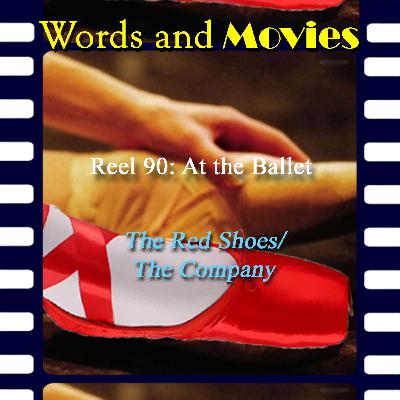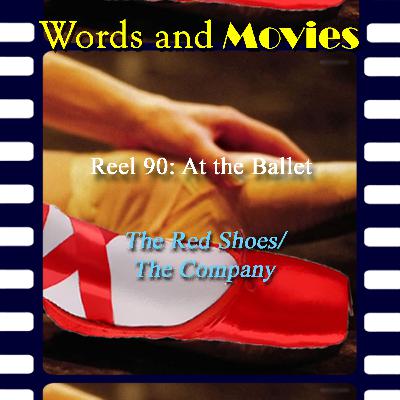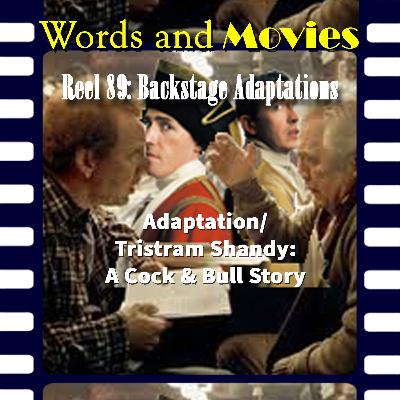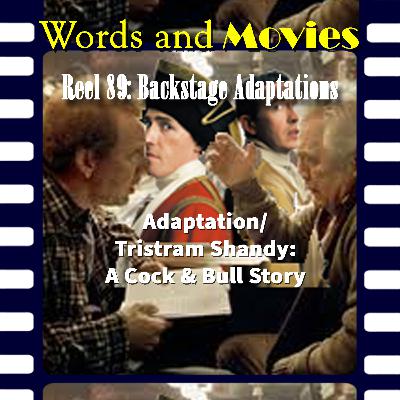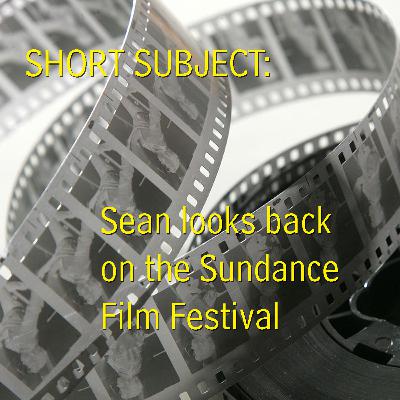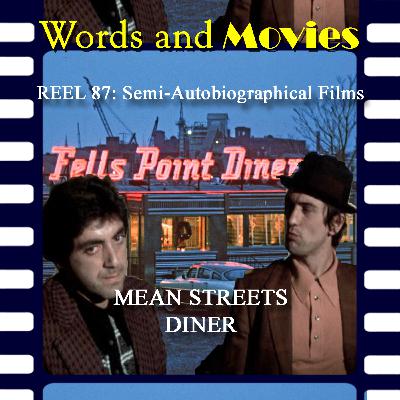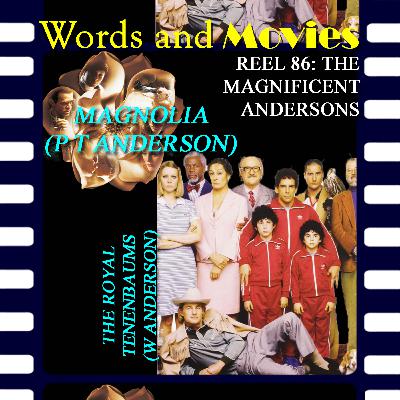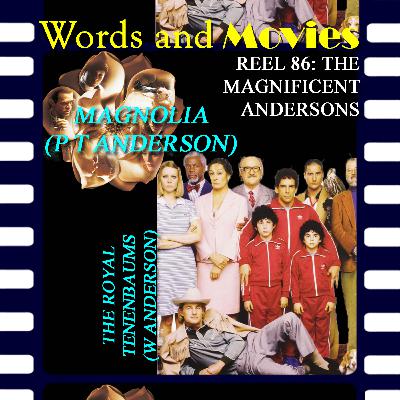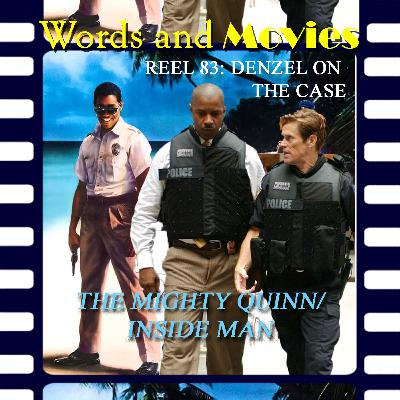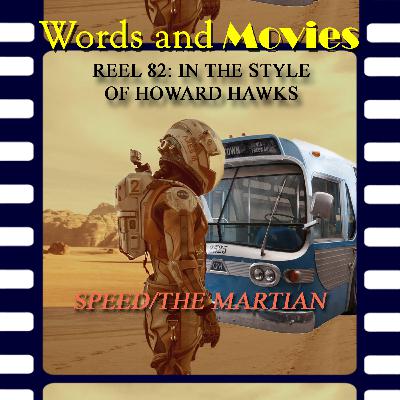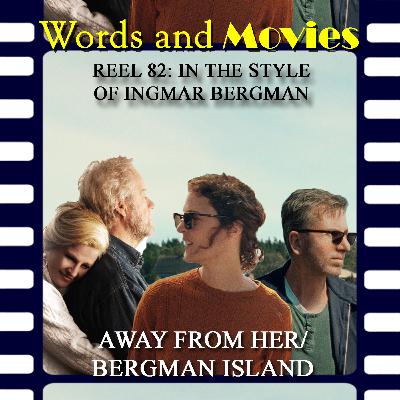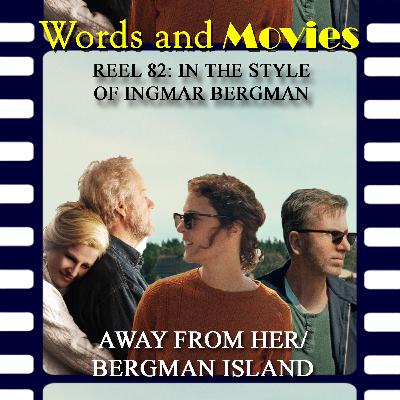Discover Words and Movies
Words and Movies

152 Episodes
Reverse
In the second half of our episode, we take a peek at THE COMPANY (2003), a fictional story involving a real ballet company, with a couple of actors thrown in who aren't professional ballet dancers. As with any Altman film, there's a lot going on, usually simultaneously, and there are are a couple of throughlines making their way through a bunch of set pieces. But once you get used to Altman's cadences, you'll enjoy yourself throughout. COMING ATTRACTIONS: In our next episode, Humphrey Bogart joins the Resistance. We begin with CASABLANCA, which we could have easily spent the entire episode reviewing. Fortunately for you we showed some restraint and moved on to TO HAVE AND HAVE NOT, which takes a very different tack on the subject. Join us, won't you?
In today's episode we're going to have a look at a couple of films made several decades apart that look at the goings-on behind the scenes in ballet companies. In this half of the episode, we're reviewing THE RED SHOES (1948), directed by Michael Powell and Emeric Pressburger. We have impresario-type behavior, composers with big egos, love triangles, and all of it rather thinly overlaid on a Hans Christian Andersen story. But that's not a bad thing, even though there's at least one sticking point where Sean and I disagree. (It's minor, but we're each staying to our own side of the street on this one.) In Part 2 we jump into this century for a Robert Altman film.
In Part 2 of today's episode, we look at TRISTRAM SHANDY: A COCK AND BULL STORY, directed by Michael Winterbottom. Steve Coogan is an exaggerated version of himself (we hope), playing the title character in the film adaptation of The Life and Opinions of Tristram Shandy, Gentleman. He's constantly sparring with another actor in the film over the relative importance of their roles. The director doesn't appear to have a good handle on the source material, but oddly enough the two people who do are constantly ignored. If you've ever watched a film and wondered "How did this get made?", this might provide the answer. COMING ATTRACTIONS: Next time, we go to the ballet, starting with the 1948 film THE RED SHOES, written and directed by Michael Powell and Emeric Pressburger. Sean and Claude both enjoyed this film while having some rather different opinions about it. From there we move on to 2003's THE COMPANY, directed by Robert Altman. It follows a season of rehearsal and performances at the Joffrey Ballet. It stars Neve Campbell, James Franco, and Malcolm McDowell. As with any Altman film, it's a little hard to follow at first but once you relax into his rhythms, you'll have a great time. Join us, won't you? .
Hey there! LTNS!Today we take a look at a pair of films that deal with the creation of a film, but the catch is that the source material is notoriously difficult to adapt. Consequently the crux of the story we see involves the difficulty the creators are having putting the thing together. We start with ADAPTATION (2002), directed by Spike Jonze. We've got a terrific ensemble cast including Nicolas Cage, Chris Cooper, Meryl Streep and more. Cage is a man who suffers from anxiety and depression, and he can't get his act together to write an adaptation of the book The Orchid Thief. His twin brother shows up and decides that he wants to write a movie script. Hijinks ensue. Now that we've seen the struggles with the script writing process, move on to Part 2, where we observe the struggles with the filmmaking side of things.
As you no doubt know, actor/director/producer Robert Redford died last week at the age of 89. Now, lots and lots of people took the time to look back at his film career, so Sean and Claude took a different tack and reviewed a different aspect of Redford's legacy: the Sundance Film Festival. Redford wasn't one of the original founders, but he came in very early in the process, and just having his name attached to it gave the festival a new focus and level of prestige.
Way, way back in Episode 12, we looked at Stage Door and All About Eve, a couple of films about the theater industry that had practically no theater in them. We're going back to that well only only 76 episodes later, with today's look at two films that also deal with stage performers and the things that go into getting something on the boards. But where Part 1 stuck to the United States, this time around we take you to Europe. Here in the first half we bring you Topsy Turvy (1999), a British film that gives us a (mostly true) account of how Gilbert and Sullivan managed to put together one of their most famous works, The Mikado. In Part 2 we take on a more Continental flavor with The Clouds of Sils Maria.
In the second half of our episode, we check out Clouds of Sils Maria (2014), which is definitely a tonal shift from the first half. Kristen Stewart is the American assistant to an international star of stage and screen played by Juliette Binoche. The death of a former mentor leads her to consider the implications of time, aging, culture in general, and the blurring lines between relationships. We're making it sound a little dry here, but it's truly compelling. COMING ATTRACTIONS: In Reel 89 we look at some self-aware adaptations. We start with Adaptation (2002), then move on to Tristram Shandy: A Cock and Bull Story (2005). Join us, won't you?
From New York we head down to Baltimore, Maryland for DINER (1982) written and directed by Barry Levinson. This film was, in fact, shot in and around Baltimore, and Claude takes the time to flex his Baltimore geography knowledge. (By the way, when you're visiting the gravesite he mentions during the episode, you can also visit the grave of John Wilkes Booth, perhaps the best-marked unmarked grave in America.)COMING ATTRACTIONS: Next time we'll be doing a follow-up to Reel 12, with more Backstage Drama, with a slight twist. We'll start with TOPSY TURVY (1999) and move on to THE CLOUDS OF SILLS MARIA (2014). Join us, won't you?
This episode takes you to the places where a pair of directors grew up. Coincidentally, these places are also the stomping grounds for Your Humble Hosts. We begin with MEAN STREETS (1973) . directed and co-written by Martin Scorsese, which is set in New York City. (Yeah, it was filmed in Los Angeles, but they found good locations so you don't really notice.) Scorsese weaves a tale through several incidents which were likely lifted from his life. In Part 2, we'll go to Baltimore and have a bite at a DINER.
In Part Two of our episode, which isn't quite as packed as Part 1 (largely because it's a shorter, more straightforward story), we look at Wes Anderson's THE ROYAL TENENBAUMS, starring Gene Hackman, Anjelica Huston and a half-dozen or so other people as their adult children and in-laws. At the start of the film, the family isn't hanging together very well, until a little bit of deceit brings them closer. Then it separates them again. Then...well, just tune in. COMING ATTRACTIONS: In Episode 87 we're keeping our focus on directors (heh), with two films that are semi-autobiographical in nature. We'll begin with MEAN STREETS (1973), directed by Martin Scorsese, and finish with DINER (1982), directed by Barry Levenson.
In today's episode we are looking at the work of two directors named Anderson, although they're not related to one another. We begin with Paul Thomas Anderson's MAGNOLIA, from 1999. This is a film that has the complexity of a Robert Altman film, in that we have many parallel stories in a few different spaces, and they do manage to bump into one another from time to time. PT Anderson sets us up for this in the opening scenes of the film, and it's a heckuva ride from one end to the other. Stay tuned for Part 2, when we look at a film by Wes Anderson.
In this half of our episode we lighten the tone just a little bit for another Carl Franklin joint, Out of Time, starring Denzel Washington again (of course) along with Eva Mendes, Dean Cain and the always-delightful John Billingsley. In this film Denzel plays a police chief in Florida who needs to clear a murder before he, himself, becomes a suspect. COMING ATTRACTIONS:Our next episode is titled The Magnificent Andersons, as we review films directed by Paul Thomas, and then Wes, Anderson. We'll start with Magnolia (1999), and finish with The Royal Tenenbaums (2001). Join us, won't you?
This is the second of two episodes in which we look at films in which Denzel Washington is a lawman of some kind. We start with the 1995 neo-noir Devil in a Blue Dress, directed by Carl Franklin and co-starring the likes of Don Cheadle and Jennifer Beals. It's a period piece, set in post-WW2 California, and it deals with a man looking for a job but finding a mystery instead. Stay tuned--in Part 2 we look at 2003's Out of Time (not to be confused with 1987's No Way Out, which has a few plot similarities.)
In the second half of our episode, Denzel returns to the United States, and to New York City for Inside Man (2006), a Spike Lee joint. This is a crime thriller that has Denzel's character matching wits with a bank robber. There are lots of twists and turns and you're never sure who the titular "inside man" is until you're very close to the end—although there are lots of breadcrumbs to help you figure it out. If, that is, you know how to read them. COMING ATTRACTIONS: From the modern-day pieces of today's episode, we're going to jump to a period piece. Devil in a Blue Dress (1995) is set in post-war California. There's a mystery to be solved, and Denzel's the man to solve it. Finally, we wrap this package up with Out of Time (2003), which returns Denzel to the present day, but he's back in a tropical (well, subtropical, anyway) location to solve a murder before it can be pinned on him. Join us, won't you?
This is the first of two episodes we'll be doing, featuring Denzel Washington as a law enforcement officer of some kind. We open up with The Mighty Quinn, a 1989 film that Washington made right on the heels of his stint in the television show St. Elsewhere. (Don't mistake it for his film debut, though.) Denzel is a police officer on a Caribbean island and there are some strange doings happening, which point to a good friend of his as the culprit. It's a story of comedy, corruption, government interference, voodoo, cool drinks and hot music as he works to crack the case. In Part Two we come back to the states for Inside Man, from 2006.
In Part 2 of our triumphant return (shrug), we look at 2015's The Martian, directed by Ridley Scott. This film is set on two different planets: one of them has billions of people on it, and the other has...one. And we manage to jump back and forth between the two with tension and humor, and it's a fun ride the entire way. Does it make awesome scientific sense? Mostly, and the places where it doesn't, even the author (whose work is rather faithfully reproduced for this film) concedes that he needed to pull a couple of fast ones to get the story to work out.
COMING ATTRACTIONS:
We hope you like Denzel Washington, because we'll be seeing a bunch of him. First up is The Mighty Quinn, where he's fresh out of St. Elsewhere (but this isn't his film debut by a long shot). From there we check out The Inside Man, a movie with an ending you probably didn't see coming.
The show returns to begin 2025 with a look at a pair of films that, on their surface, couldn't possibly be more different from one another--but in fact they have more in common than you'd think. Both of them owe some debt to Howard Hawks, whether in visual style or dialogue patterns, or something else.
And we start with 1994's Speed, directed by Jan de Bont in his American directorial debut. Quick wit combined with action sequences make this a tight thriller with a light rom-com overlay.
In Part 2, we'll jump to 2015...and beyond!
In this half of the episode, we look at Bergman Island (2021), written and directed by Mia Hansen-Løve. It stars Tim Roth and Vicky Krieps as a couple who have come to Faro Island as fans of Ingmar Bergman and want to take the tourist view while they complete their own work in a house they've rented. Like some Bergman films, as the characters move deeper into the story, the line between the audience and the actors begins to dissolve, and we're reminded that we're watching a movie starring these actors-as-characters. It's hard to describe in writing but Bergman fans will understand instantly when they see the film.
COMING ATTRACTIONS:
Next time around, the directorial inspiration is Howard Hawks, with a couple of fairly recent films: Speed (1994) directed by Jan de Bont, and The Martian (2015), directed by Ridley Scott. Join us, won't you?
In our last episode we took a look at films that followed Alfred HItchcock's filmmaking style. This time around we're looking at films that have deep echoes of the work of Ingmar Bergman.
We start with Away From Her (2006), written and directed by Sarah Polley. Julie Christie plays a woman whose Alzheimer's is starting to advance, and her husband (Gordon Pinsent) has to deal with the guilt, the loneliness and all the other unexpected complications that come with placing her in a facility. It's probably one of the best films about Alzheimer's you'll see, and it's simultaneously sad and uplifting.
In Part 2, we'll talk about a movie that's a little more on the nose, with Bergman Island.
In this half of the episode, we're looking at Tell No One, a French film from 2006 directed and co-written by Guillaume Canet.
COMING ATTRACTIONS:
In our next episode we go from Hitchcock to Bergman, as we look at a pair of films styled after that director. We start with Away From Her (2006) and then to the aptly-named Bergman Island (2021). Join us, won't you?


